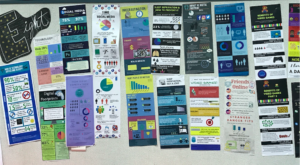Hey 6th graders! You just learned about the Wellness Wheel and the four main components of our health: Physical, Social, Emotional and Mental. You also learned that you’re at your best when these areas are in balance. Of course, knowing how to maintain that balance can be tricky.
With this project, we’re going to learn about the Blue Zones, areas in the world where people are so healthy, that they have a larger number of people who live to be over 100 than in any other places on earth. How are they staying so healthy? Well, it’s up to you to find out.
PART 1: Researching the Blue Zones
Dig through these links, and anything else you find online. As you research, record your wonderings and findings on the following sheet: Blue Zones Project
Slide Show: Sardinia’s Blue Zone
Click through these links to explore what the Blue Zones are all about. • Info on Blue Zones
• How Three So Cal Beach Cities Help Clear the Path for Healthier Choices
• Eight Ways to Create Your Own Personal Blue Zone
• National Geographic’s Blue Zones Photo Gallery
PART 2: Setting your Goals
- Find someone who has the opposite character strengths as you to team up with (this way you can learn from each other!)
- Write four SMART goals, one for each side of your Wellness Wheel – physical, mental, emotional and social. Make sure your goal is action-based, not circumstance-based. If you’re having a hard time finding goals, remember what we learned from the Blue Zones, and set some based on the strengths you’d like to improve.
- Type them on the bottom of your Blue Zones research questions.
- Check your goals with your partner to make sure they’re SMART ones.
- Check your goals with me for final approval and any tweaking.
- Print!!
Part 3: The Podcast Interview
1. Write a script with your partner. You need to make sure you include all four of your goals, as well as which side of the Wellness Wheel they’re covering. Don’t forget to make your podcast entertaining and to let your individual strengths shine through!
2. Record your podcast. Using whichever voice recording program you feel most comfortable with, (PodOMatic, Voice Candy, Garage Band, Quick Time, or any other one you’ve learned) record your interview. It shouldn’t be more than five minutes long in total.
If you need help on creating a podcast, or this is a new skill for you, check out the detailed tutorial on creating a free podcast from Microsoft.
3. Export to a sound file and put it in my inbox on the server.
Good luck and have fun!!




